Vaadwaur Supremacy
More actions
The Vaadwaur Supremacy is a militaristic, authoritarian government of the far reaches of the Gradin Belt in the Delta Quadrant. Once a vast empire that commanded great swathes of the quadrant through their control of the subspace tunnels of Underspace, they were defeated in the late 15th century by an uprising of their vassal species, which included the Turei Alliance. The Supremacy was defeated and the Vaadwaur themselves all but wiped out until a pocket of survivors were found by the USS Voyager in 2376. Retreating from known space for a quarter-century, the Vaadwaur have returned in 2402 with vast forces at their command, bent on building a new empire.
Physiology
Vaadwaur have small ridges on their chins and two horizontal ridges just above their noses. A large fin-like crest runs across the center of their foreheads, becoming wider as it reaches the tops of their skulls. Their hair grows from around the mid-region of their skulls, just where their fin ridges seem to end. Neck ridges extend from their ears, down along their necks, and onto their shoulders where they curl in towards the centers of their chests. The Vaadwaur are not known to be any stronger or more resilient than humans on average.
History
Delta Quadrant Supremacy
The Vaadwaur Supremacy ruled much of Delta Quadrant the at its height, using the network of subspace corridors known as Underspace to launch raids on systems throughout the quadrant. In the 15th century, the Turei Alliance led a successful interstellar campaign against the Vaadwaur. This uprising ended with the massive orbital bombardment of the Vaadwaur homeworld and many of their colonies, a genocide that rendered most of these planets uninhabitable for centuries. This forced the last survivors into stasis in the hopes of one day rebuilding their culture.
Reawakening
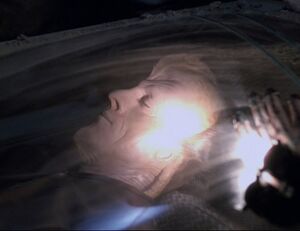
One world, believed to be the homeworld itself, was found by the USS Voyager in 2376 when they took shelter from the Turei on the surface. After the orbital bombardment even centuries earlier, the planet's atmosphere was still heavily contaminated with gamma radiation and radiogenic particles. Discovering the Vaadwaur in stasis, the crew of Voyager reawakened and helped them, but eventually discovered their supremacist nature and the Vaadwaur were forced to flee. Several dozen Vaadwaur ships escaped the planet.
In the following years, the Vaadwaur used the Underspace network to rebuild. Despite their original territory being held almost nine hundred years ago, they forged alliances and negotiated for equipment, making particular in-roads with the Hazari through offering Underspace access. Raids for resources and the targeting of worlds for annexation began, and by the early 2380s, the Vaadwaur were a rare but feared threat in the Gradin Belt.
But the Turei realised the extent of the Vaadwaur's determination and strength. Reminding their neighbours in the Gradin Belt of the historic dangers of the Supremacy, they built a short-lived alliance not of military force, but commerce. By cutting the Vaadwaur off from trade and putting economic pressure on the Hazari to break off their support, they choked this blossoming resurgence over a matter of years. By the 2390s, the Vaadwaur had all but abandoned the Gradin Belt, and their territories were unknown.
Current Status
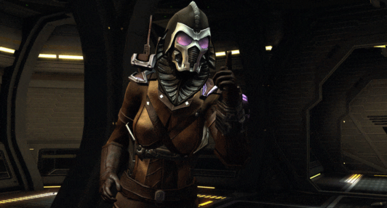
In 2401, apertures into Underspace opened across the galaxy, before they were forced closed by an alliance of the Turei and the Cardassian Union. The Cardassians stated that they feared the geopolitical implications could collapse borders and upend all galactic order, while the Turei kept their own motivations guarded. A year later, in 2402, disruptions to subspace across the Alpha and Beta Quadrants causing the failure of faster-than-light travel and communication technologies was named the ‘Blackout,’ an unprecedented crisis striking the Federation and beyond. A month after the chaos began, Underspace apertures opened anew across the Alpha and Beta Quadrants, this time to release the fleets of Vaadwaur ships.
The vanguard of an invasion, these forces struck defences that were both completely surprised and critically under-resourced by the Blackout. Some conducted lightning raids to devastate locations key to local defence or culture, or sacking repositories of valuable resources. Others arrived in force to occupy prized territories, landing invading forces and setting up garrisons to secure beachheads. With the forces of the Alpha and Beta Quadrants scattered and cut off by the Blackout, defenders across the galaxy have been largely overwhelmed.
The Vaadwaur’s stated intentions, spread by broadcasts to those they have conquered and broadcast to the galaxy through their Underspace-traversing communications technology, is the re-establishment of a new Vaadwaur Supremacy. They claim they are responsible for extending Underspace access to this reach of the galaxy. There is little indication their military forces were marshalled against their former Delta Quadrant territories, but that they have instead struck new enemies wholly unfamiliar with their rule.
At present, the Vaadwaur’s assembled military might stands poised to occupy and threaten the fractured Alpha and Beta Quadrants, which cannot rally its defences to defy them.
Society
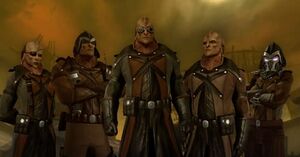
Little is known about Vaadwaur culture. Observations are based almost entirely on records from the USS Voyager, and immediate encounters with invading forces. Starfleet has secured only limited information on the Vaadwaur from the other peoples of the Gradin Belt, and most available sources are historical records a thousand years old, and thus of dubious reliability. This means Starfleet’s contemporary knowledge of the Vaadwaur has been derived from military intelligence and engagement with an actively invading force, and officers are urged to not rely on this to draw conclusions about wider Vaadwaur society.
The Vaadwaur are, however, clearly an authoritarian society with a high belief in their species’s superiority to others. They are deeply xenophobic; while Voyager reported of a people who were willing to cooperate with their saviours, societal racism has never stopped polite interpersonal interactions, and the awakened battalion were particularly desperate. They believe unshakably in the superiority of the Vaadwaur species, and it is from this sense of superiority that they derive justification for their violent expansionism and conquest. They are largely lacking in paternalism or any belief that their occupation ‘improves’ the territories they hold or the people they conquer. It is instead a sense of might making right, that they are an ambitious people who will take what they can hold. Conquered people are broadly dehumanised; if they wanted to be worthy of respect, they should have been able to defend themselves. No culture is a monolith, and some Vaadwaur officers may be curious about occupied people or believe that their lot will be improved under the Supremacy, but they have no national lie akin to, for example, the Dominion’s stated belief of bringing order to a chaotic galaxy.
Nothing is known of civilian hierarchies or authorities of the Vaadwaur Supremacy; if they exist, then they have not participated in the invasion force. It is believed that the Vaadwaur approach to family takes on a militaristic edge; the family is a space where social attitudes are built and entrenched, and thus family members are expected to be as dutiful to each other as they are to the state. Families which adhere to Vaadwaur sensibilities and loyalty to the Supremacy are tight-knit groups; individuals who fail the Supremacy through action or mentality are no longer valued. This was noted in Voyager’s first encounter with the Vaadwaur, where the survivor Gedrin - himself a moderate who tried to stop the resurgence of the Supremacy - was dismissive of his wife’s death, expressing he had found her cowardice disappointing. This failure to adhere to Vaadwaur values was seemingly more important than any affection or marital bond.
Underspace
It is unknown how the Vaadwaur discovered Underspace, or became experts in navigating the dangerous network of subspace tunnels. It was integral to the founding of the Supremacy, enabling their fleets to not only cover vast distances, but strike their enemies anywhere with no warning. While species like the Turei have continued to study Underspace, even in the thousand years since the fall of the Vaadwaur, nobody’s understanding of the phenomenon can compare to the Supremacy’s mastery.
The strategic benefits have been clear. In addition to swift traversing of vast distances, the Vaadwaur have learnt to use Underspace for long-distance communication that dwarfs the capabilities of most subspace communication technology, transmitting across the network. They have also mastered surveillance technology that lets them observe goings-on in normal space from within Underspace. While this is ostensibly limited by the network itself - the Vaadwaur can only scan regions in proximity to tunnels - it is a largely undetectable source of boundless intelligence. Starfleet Command is confident the Vaadwaur have spent at least the last year using Underspace to study the Alpha and Beta Quadrants in preparation for their invasion.
The mastery of Underspace has an undeniable impact on the psyche and tactics of the Supremacy. It contributes to their belief in their own superiority, for only they possess the knowledge to safely use the dangerous network. Their fleets are most comfortable staging surprise attacks, either arriving in massive force to swiftly overwhelm an enemy, or conducting lightning strikes in hit-and-run raids. Even in engagements where Underspace plays little strategic or tactical role, this approach is reflected in their fleet commanders’ tactics; they prefer, above all, if their enemy cannot see them coming.
These strategies also gave the Vaadwaur a certain mystique among their enemies; they were the foe who could strike from nowhere and vanish before defenders could arrive. It has made them part of many Delta Quadrant’s myths and legends where they are powerful spectres and shadows, elusive and dangerous. Once, the Vaadwaur may have leaned into this reputation for its strategic usefulness. Now, they themselves embrace it, enjoying being feared in such a way and using it to their advantage.
Military
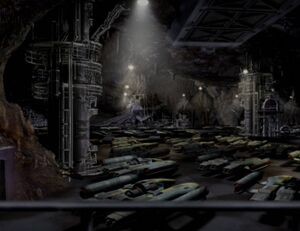
The Vaadwaur Supremacy commands a large and technologically advanced fleet. Limited intelligence exists on the forces of the original empire, but what data was brought home by Voyager gives some insight to the nature of their ships. Crucially, the vast majority are brand-new designs which share aesthetic similarities to the ships of the old Supremacy, but are considerably more technologically advanced. A handful appear to be the thousand year-old ships, but have been vastly upgraded.
This speaks to a massive leap in technological prowess and industrial infrastructure over the last quarter-century. Since their encounter with Voyager, the Vaadwaur have somehow secured advanced weapons systems notably, though not massively, more powerful than those of the great powers of the Alpha and Beta Quadrants. The sheer number of ships also speaks to the acquisition of vast ship-building capabilities.
Somehow, a scattered battalion of Vaadwaur survivors in a flotilla of ships a thousand years old have returned with a fleet able to challenge some of the mightiest factions of the galaxy. Certainly, their strength and numbers would be overwhelmed were it not for the Blackout, with defending fleets unable to consolidate or reinforce, and most attacks enjoying the element of surprise while the defenders were already weakened. This is still an exponential leap in technological and industrial capabilities.
Universal translators have not discerned any nuances in their ranks or titles: fleets are led by admirals, ships commanded by captains, junior officers hold ranks such as ‘lieutenant’ aboard both starships and in ground forces, and at the lowest levels, ‘soldiers’ are immediately supervised by ‘sergeants.’ This is an interpretation of the universal translator, with any further intricacies of their hierarchy or meaning behind the language of their military ranks unknown.
Tactics and Culture
Vaadwaur soldiers demonstrate absolute commitment to the Supremacy, with a high level of martial discipline, and a dedication to their government that has drawn comparisons to loyal Cardassian or Devore military officers. They operate under a strict hierarchy where superiors are to be obeyed absolutely, and the unit is considered an extension of the Vaadwaur nation itself.
As with many militaristic societies, they prize concepts such as patriotism, honour, bravery, and duty above all else. Vaadwaur soldiers seem motivated to military service through not only patriotism, but the allure of adventure, the promise of military camaraderie, and treat this invasion as an opportunity to test and prove themselves, the chance to participate in an historic, generation-defining event for their people. This, along with the lack of regard for any sense of personhood of their enemies, seems to make the attraction of war all but irresistible to them.
Fleets
Ground Forces
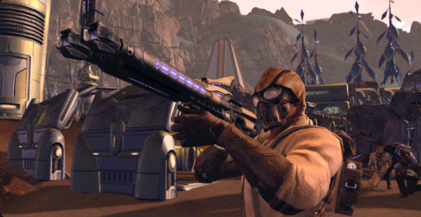
Accustomed to building a vast, dispersed empire and holding it through force, the Vaadwaur have a stronger commitment to infantry than many galactic powers. Their well-trained soldiers carry Vaadwaur military discipline into the field, paired with sophisticated weapons technology dating back to the height of their power.
They prefer to deploy in small, elite squads, with a strong esprit de corps and total commitment to the unit and the Supremacy. These squads may be deployed en masse in a ground invasion or ship boarding, each with their own mission in pursuit of the wider objective. With close communication between units and from commanders, this results in highly flexible deployments, where squads can be redirected at a moment’s notice. Starfleet officers report facing off against well-equipped, prepared, and cohesive small units who strike suddenly and viciously, and if they face serious resistance, reinforcements are rarely far behind.
When necessary, the Vaadwaur deploy troops in larger numbers, but prefer to rely on ground artillery and orbital bombardment to soften targets before sending in their units. Transporters and landing shuttles help with squad deployments, but their fondness for lightning-fast strikes and deployments led the Supremacy to develop ‘drop pods’: pods containing site-to-site transporter beacons that can be launched from orbit to key locations. Soldiers can then beam down from starships, bypassing most shield technologies that would block transporters.
Vaadwaur soldiers’ uniforms and equipment look dated and utilitarian, hard-worn in brown and black leathers, favouring gloves, helmets, breathing masks, and goggles to protect against the elements. Their polaron-based small arms are concussive, resembling kinetic weapons, and those unfamiliar with such weapons report finding their weight and recoil unwieldy. Training means Vaadwaur soldiers experience no such unease, and wield their combat equipment with brutal competence.
Psychological Warfare and Atrocities
Underspace has indelibly shaped how the Vaadwaur approach war psychologically, as well as strategically. Studying their opponent from the unseen reaches of the tunnels before launching an overwhelming assault in complete surprise not only gives them a military advantage, but a sense of power. They enjoy and benefit from sneak attacks, striking from the shadows, or demonstrating their superior knowledge of a bewildered foe. This goes beyond simple tactical benefit; the Vaadwaur are at their happiest if they can confound and terrify their enemy.
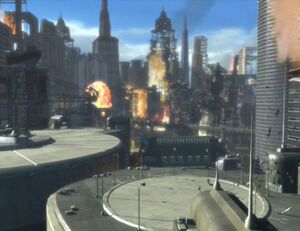
The apocalyptic nature of the fall of the Supremacy has inevitably left an enormous impact on Vaadwaur society. Soldiers are deeply motivated not only by recovering what they lost, but avoiding a repeat of the genocide that their former vassals inflicted upon them. This only incites further xenophobia, with Vaadwaur no longer merely dismissing other species, but fearing them. They were destroyed before; if they are not strong, if they do not conquer all threats, they may be destroyed again. Crucially, this existential danger presented by all perceived enemies provides justification for any and all measures to be taken against them.
Together, this results in a willingness to terrorise their enemies. Sneak attacks are not exclusively focused on strategic targets, but cultural ones. The sudden devastation of a site of spiritual importance will demoralise an enemy, and the Vaadwaur take pride and satisfaction in studying their foe to identify where will hurt them the most before delivering a merciless blow.
Mass enemy casualties are of no concern to them; their xenophobia makes the Vaadwaur unmoved by the suffering of their enemies. While they do not deliberately or maliciously seek to inflict atrocities on their enemies - as a rule - they know the advantage of fighting a foe whose morale has been broken, or who is incensed into making mistakes. If they cannot reach a strategic target from an initial attack from Underspace, they will think nothing about orbital bombardment of civilian settlements instead.
Different Vaadwaur commanders have different approaches. Some will be cold-blooded leaders who take the most efficient route to success. Others may thoughtlessly wreak carnage on enemy civilian and military targets alike, while others still may more deliberately study foes to identify how best to psychologically break them. For some, this is a strategic matter; for others, psychological warfare is just as important in battlefield tactics.
Blackout Outposts
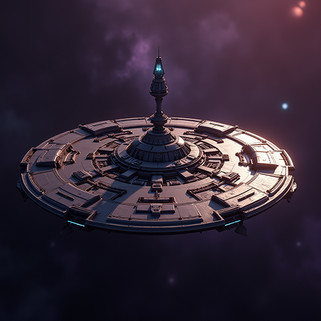
The Blackout Outposts are responsible for the eponymous phenomenon that has cast the Alpha and Beta Quadrants into isolated (metaphorical) darkness, rendering use of subspace-based technology for travel, communication, and sensors impossible beyond certain regions. The Vaadwaur have pre-built these platforms, towing them through Underspace in the months leading up to their invasion, and carefully positioning them in the tunnels for maximum strategic impact upon their activation.
The outposts are large, nearly a kilometre in radius. They are equipped with a tachyon emitter, a large piece of equipment external to the platform. This influences the tachyon flows of localised Underspace in a manner that causes the fluctuations of subspace harmonics in a region. So long as that emitter is active, the local Blackout effect continues. The outposts are not a network; if one falls, the localised Blackout effect fails. Only when every outpost has been destroyed or disabled will the entirety of the Blackout effect end.
They are well-armed and well-shielded, and have a significant crew of several hundred soldiers aboard to operate the facility and guard it against attackers. These outposts are rarely left isolated; local Vaadwaur leaders usually assign ships to, if not protect the outpost directly, then patrol the nearby stretches of Underspace tunnels to identify and intercept any potential threat.
Direct assault to destroy these outposts would take considerable firepower. There is no clear or routine way to render an outpost inoperable; every Starfleet ship charged with their destruction must find a way, through brute force, sabotage, or ingenuity, to bypass the outpost’s defences - external and internal - and defeat it.
In Play
- The Vaadwaur Supremacy are the force invading the Alpha and Beta Quadrants in Nightfall. They are an ancient Delta Quadrant empire seeking to restore lost glory, and their mastery of the Underspace tunnels has allowed them to launch this massive attack seemingly out of nowhere.
- They are known to be behind the Blackout that has ravaged the quadrants for a month.
- There are some IC unknowns about the Vaadwaur attack. Were they responsible for Underspace’s awakening a year ago, and if so, why did they not attack immediately? Where have they come from, when they were last driven into the unknown reaches of the Delta Quadrant? How do they have the population numbers to deploy such a massive military? And, crucially, how do they have the advanced technology and ships to go toe-to-toe with the forces of the Alpha and Beta Quadrants?
- The invasion is terrifying and confusing. But while the Vaadwaur forces are impressive, they are clearly reliant on the Blackout blocking avenues of communication; the full extent of their forces and deployment is completely unknown. If even a few sectors’ worth of starships could rally and deploy to repel an attack, the Vaadwaur invasion would be quickly stomped out.
- The Vaadwaur are a highly disciplined, militaristic force, with a strict hierarchy and a strong commitment to the Supremacy. They use sophisticated tactics and even without Underspace enjoy lightning-fast strikes, hit-and-run attacks, and being able to attack unexpectedly to not only gain military advantage, but to shock and awe their opponents.
- Their fear of being destroyed, as they once were before, has heightened their xenophobia and justifies, in their eyes, any measures being taken to preserve the Supremacy. For many Vaadwaur soldiers, this means that terrorising enemies and breaking their morale is an acceptable tactic, even if it leads to mass casualties and atrocities.
